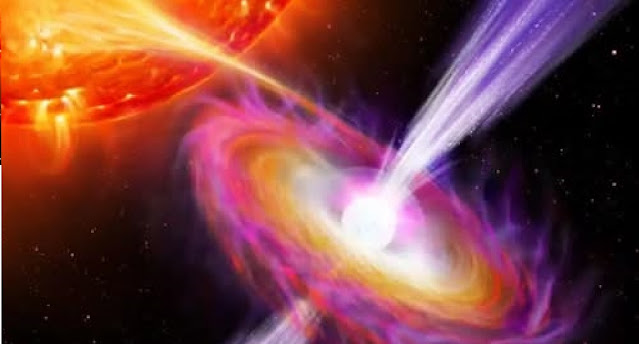Jets Erupt from an Unexpected Source
Astronomers have made a groundbreaking discovery: a fast-moving jet of matter shooting out from a neutron star with an immensely strong magnetic field, estimated to be 10 trillion times that of the Sun. This unprecedented observation, published in Nature forces scientists to rethink how jets form in the universe.
Neutron stars are the ultra-dense remnants of massive stars that explode as supernovae. These compact objects have gravitational pulls nearly rivaling black holes. Swift J0243.6+6124 (SW J0243), a neutron star first spotted during an outburst in October 2017 by NASA’s Swift telescope, has since been under study. Recently, the Karl G. Jansky Very Large Array (VLA) revealed surprising details about its behavior.
A Challenge to Existing Theories
Researchers found that SW J0243 is pulling material from a nearby massive star, creating a swirling accretion disk. The neutron star’s magnetic field interacts with this disk, leading to the formation of jets at its poles that expel matter at nearly the speed of light. While jets from neutron stars are not unheard of, this is the first time such a phenomenon has been observed in a neutron star with a magnetic field of this strength.
According to previous models, powerful magnetic fields like that of SW J0243 should suppress jet formation. Jakob van den Eijnden, lead author of the study, noted, “Our clear discovery of a jet in SW J0243 disproves that longstanding idea.”
Despite the breakthrough, the researchers urge caution. More observations are needed to rule out alternative explanations like stellar winds or shock waves. However, if confirmed, this discovery reshapes our understanding of how jets form and expands possibilities for future research.
Co-author Nathalie Degenaar remarked, “This discovery not only means we have to revise our ideas about jets from such systems, but also opens up exciting new areas of research.”

















No comments